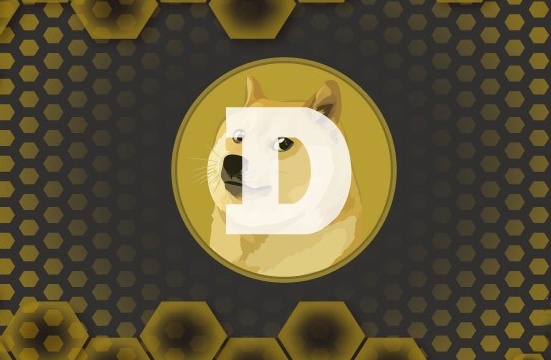Dogecoin: Everything You Need To Know About The Cryptocurrency

In the world of cryptocurrencies, Dogecoin has emerged as a charming and somewhat quirky digital asset that has captured the attention of both enthusiasts and skeptics alike. Originally created as a meme-inspired coin, Dogecoin has since evolved into a serious player in the cryptocurrency market.
What is Dogecoin?
Dogecoin, often abbreviated as DOGE, is a cryptocurrency that was created in December 2013 by Billy Markus, a software engineer, and Jackson Palmer, a marketing specialist. Unlike Bitcoin, which was created as a digital alternative to traditional currencies, Dogecoin was initially developed as a lighthearted and satirical cryptocurrency inspired by the popular “Doge” meme, featuring a Shiba Inu dog with humorous captions in broken English.
However, what started as a joke soon gained a dedicated following and community of users. Dogecoin’s appeal lies in its friendly and approachable branding, which sets it apart from the more serious and complex cryptocurrencies. The Shiba Inu dog logo, the “Doge” meme theme, and its generous and philanthropic community make Dogecoin a unique presence in the crypto world.
History of Dogecoin
Early Days and Rapid Growth
Dogecoin’s journey began on December 6, 2013, when Billy Markus and Jackson Palmer launched the cryptocurrency as a fun and light-hearted project. It quickly gained popularity on social media platforms and became known for its generous tipping culture, where users would tip each other with Dogecoin for creating or sharing interesting content.
In 2014, Dogecoin gained further attention when the community successfully fundraised Ɖ67.8 million (approximately $30,000 at the time) to sponsor the Jamaican bobsled team’s trip to the Winter Olympics. This event showcased the power of Dogecoin’s community and its willingness to support charitable causes.
Challenges and Resilience
While Dogecoin continued to grow in popularity, it also faced challenges. In 2015, the Dogecoin blockchain experienced a contentious hard fork, resulting in the creation of a new cryptocurrency called Dogecoin Classic. However, DOGE itself remained the dominant chain, and the community continued to support it.
Recent Surge in Popularity
Dogecoin’s popularity skyrocketed in early 2021, partly driven by celebrity endorsements and social media trends. Tweets from prominent figures like Elon Musk and endorsements from Snoop Dogg and Mark Cuban contributed to a surge in interest and investment.
The price of Dogecoin saw significant volatility during this period, with rapid price increases and fluctuations. This sudden surge in interest also led to intensified Doge price predictions, with experts and enthusiasts alike trying to forecast the coin’s trajectory in the midst of rapid price increases and fluctuations. This speculative frenzy drew both excitement and caution from investors and experts, further fueling the ongoing debates about Dogecoin’s long-term viability and utility.
Dogecoin Features
Fast and Low-Cost Transactions
One of Dogecoin’s key features is its quick transaction processing time and low fees. It takes approximately one minute for a Dogecoin transaction to be confirmed, making it suitable for everyday transactions.
Inflationary Supply
Unlike Bitcoin, which has a capped supply of 21 million coins, DOGE has an inflationary supply model. Approximately 10,000 new Dogecoins are created every minute, ensuring that there is a continuous supply to meet demand. While some view this as a potential drawback, it also means that Dogecoin can maintain low transaction fees and potentially serve as a more accessible digital currency for everyday use.
Strong and Supportive Community
The Dogecoin community is known for its friendliness, generosity, and engagement in various charitable activities. This strong community support has contributed to Dogecoin’s enduring presence and unique identity in the cryptocurrency space.
How Dogecoin Works
Blockchain Technology
Like most cryptocurrencies, Dogecoin operates on a blockchain, which is a decentralized and immutable ledger that records all transactions. The blockchain ensures transparency and security by using cryptographic techniques.
Mining
DOGE mining is the process by which new coins are created and transactions are confirmed. It uses a proof-of-work (PoW) algorithm, similar to Bitcoin. Miners compete to solve complex mathematical puzzles, and the first one to solve it gets the right to add a new block of transactions to the blockchain. Miners are rewarded with newly created Dogecoin and transaction fees for their efforts.
Wallets
To use Dogecoin, you need a cryptocurrency wallet. Wallets come in various forms, including software wallets (online or mobile), hardware wallets (physical devices), and paper wallets (physical copies of your private keys). These wallets store your Dogecoin and allow you to send and receive it securely.
How to Buy Dogecoin
If you’re interested in buying Dogecoin, here are the steps to get started:
1. Choose a Cryptocurrency Exchange
Select a reputable cryptocurrency exchange that supports Dogecoin trading. Some popular options include Binance, Coinbase, Kraken, and Bittrex.
2. Sign Up and Verify Your Account
Create an account on the chosen exchange and complete the necessary identity verification (KYC) procedures.
3. Deposit Funds
Deposit funds into your exchange account using fiat currency (e.g., USD, EUR) or other cryptocurrencies like Bitcoin or Ethereum.
4. Place an Order
Navigate to the Dogecoin trading pair (e.g., DOGE/USD) and place an order. You can choose to buy Dogecoin at the current market price (market order) or specify a desired price (limit order).
5. Secure a Wallet
For added security, transfer your Dogecoin to a secure cryptocurrency wallet that you control. Hardware wallets are considered one of the safest options.
Is Dogecoin a Good Investment?
The question of whether DOGE is a good investment is a topic of much debate and speculation. Here are some factors to consider:
1. Volatility
Dogecoin’s price has exhibited extreme volatility, with rapid price fluctuations that can be challenging to predict. While this volatility presents opportunities for traders, it can also lead to significant losses for those who invest without a clear strategy.
2. Lack of Fundamental Value
Unlike traditional assets like stocks or real estate, cryptocurrencies like Dogecoin do not have underlying assets or revenue streams that determine their intrinsic value. Their value is largely driven by market sentiment and speculation.
3. Speculative Nature
Much of Dogecoin’s recent price appreciation has been attributed to speculative trading and celebrity endorsements rather than any fundamental changes to its technology or utility.
4. Long-Term Viability
The future of Dogecoin is uncertain. While its active community and low transaction fees are strengths, it faces competition from other cryptocurrencies with more advanced features and use cases.
5. Diversification
If you choose to invest in Dogecoin, it’s essential to diversify your investment portfolio to manage risk effectively. Never invest more than you can afford to lose.
Conclusion
In conclusion, DOGE, born as a meme-inspired cryptocurrency, has evolved into a significant player in the crypto world. Its history is a fascinating journey from a joke to a serious digital asset. Dogecoin boasts fast transactions, a friendly community, and low fees, making it attractive for everyday use.
However, its long-term investment potential remains uncertain due to its speculative nature, lack of intrinsic value, and intense market volatility. Dogecoin’s price predictions vary widely, emphasizing the importance of careful research and diversification for potential investors.
In the end, Dogecoin’s unique identity and its role in the cryptocurrency ecosystem continue to capture the attention of both crypto enthusiasts and skeptics, making it a cryptocurrency worth watching in the ever-evolving world of digital assets.






